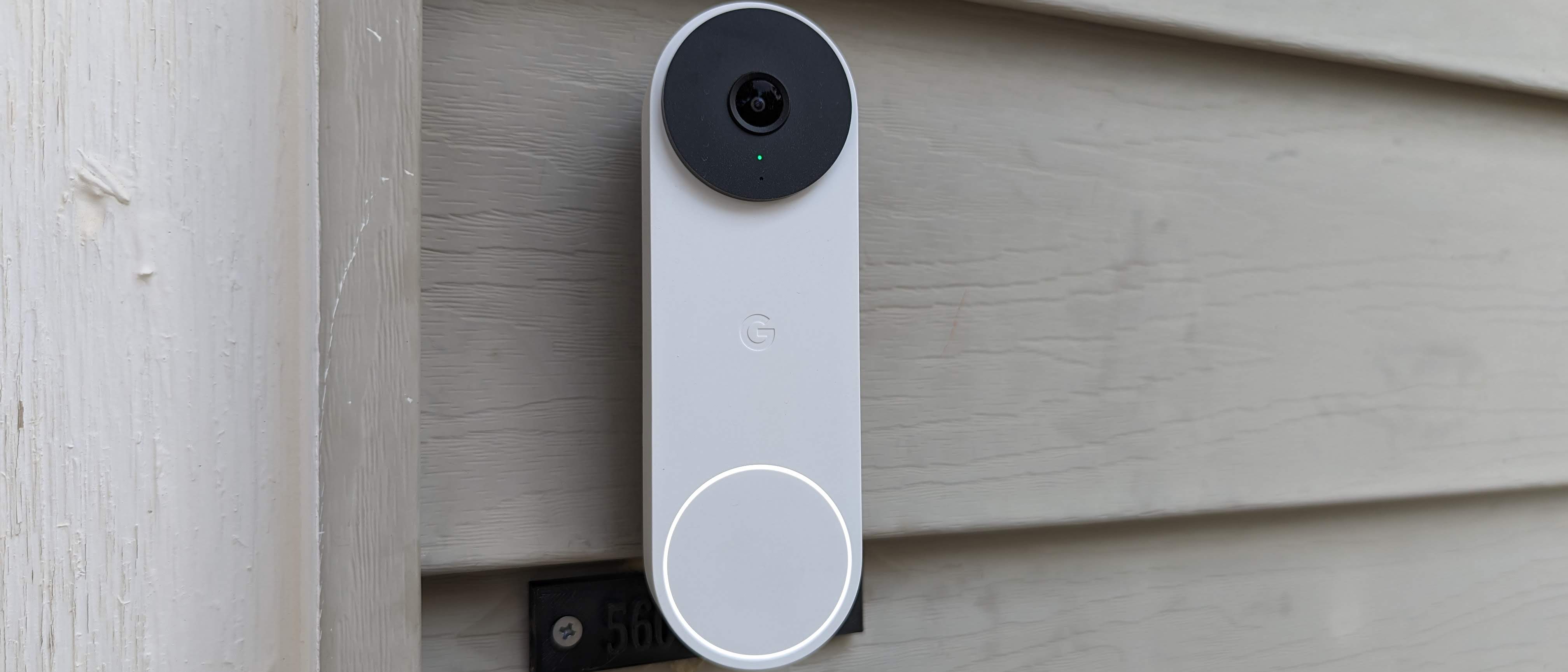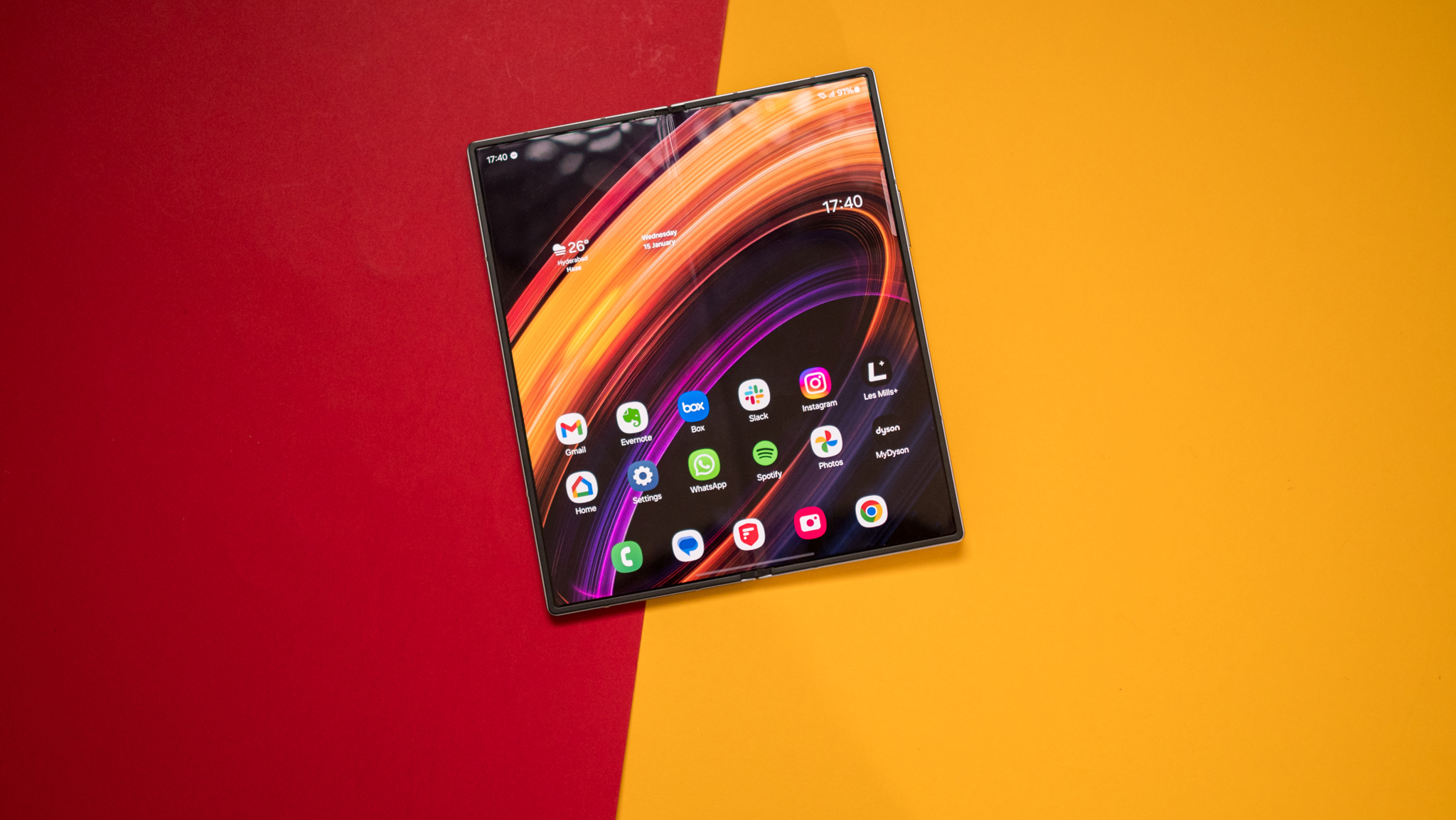Android Central Verdict
Google finally released another wired video doorbell, and the design change is welcomed over the original version. The Nest Doorbell (wired, 2nd gen) brings many of the helpful features from the battery model, like improved HDR video and Familiar Face detection along with other AI smarts, but gets 24/7 recording thanks to constant power. While not perfect, it is a very good option to secure your door.
Pros
- +
Improved design
- +
Easy setup
- +
Solid video quality
- +
Helpful AI detection features
- +
24/7 recording without a subscription
Cons
- -
A subscription is necessary if you want more than 3hrs of event history
- -
Night vision could be better
- -
The speaker is a little weak
Why you can trust Android Central
This Nest Doorbell (wired 2nd gen) is the first upgrade since the 2018 model. Much has changed for Google in machine learning, camera software, and more, so this updated wired video doorbell is very much welcomed. While the bulk of what we have in this device echoes the battery-powered model, the benefit of being hardwired into your home is that it opens up more possibilities. This is because there isn't a restriction on the power supply. So, how well does the Nest Doorbell (wired, 2nd gen) perform in day-to-day use? Well, I've got you covered.
Nest Doorbell (wired, 2nd gen) review: Pricing and availability
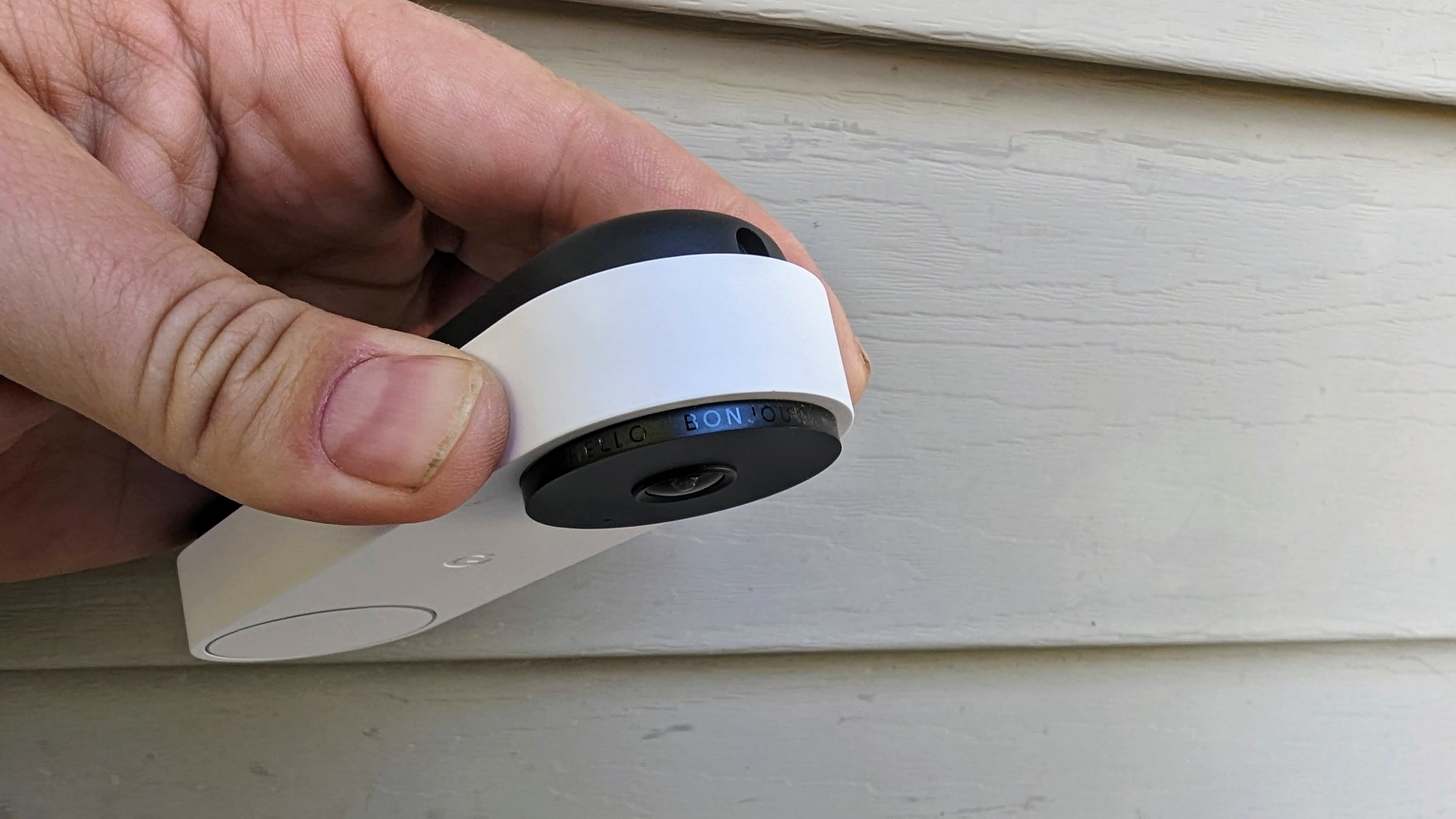
The Nest Doorbell (wired, 2nd gen) was revealed on October 4, 2022, just ahead of the Made by Google event. The new video doorbell launches with a $179.99 price tag and can be purchased through Google, Amazon, Best Buy, and more. There are four color choices available for the Nest Doorbell — Snow, Ash, Linen, and Ivy.
Nest Doorbell (wired, 2nd gen) review: What's good
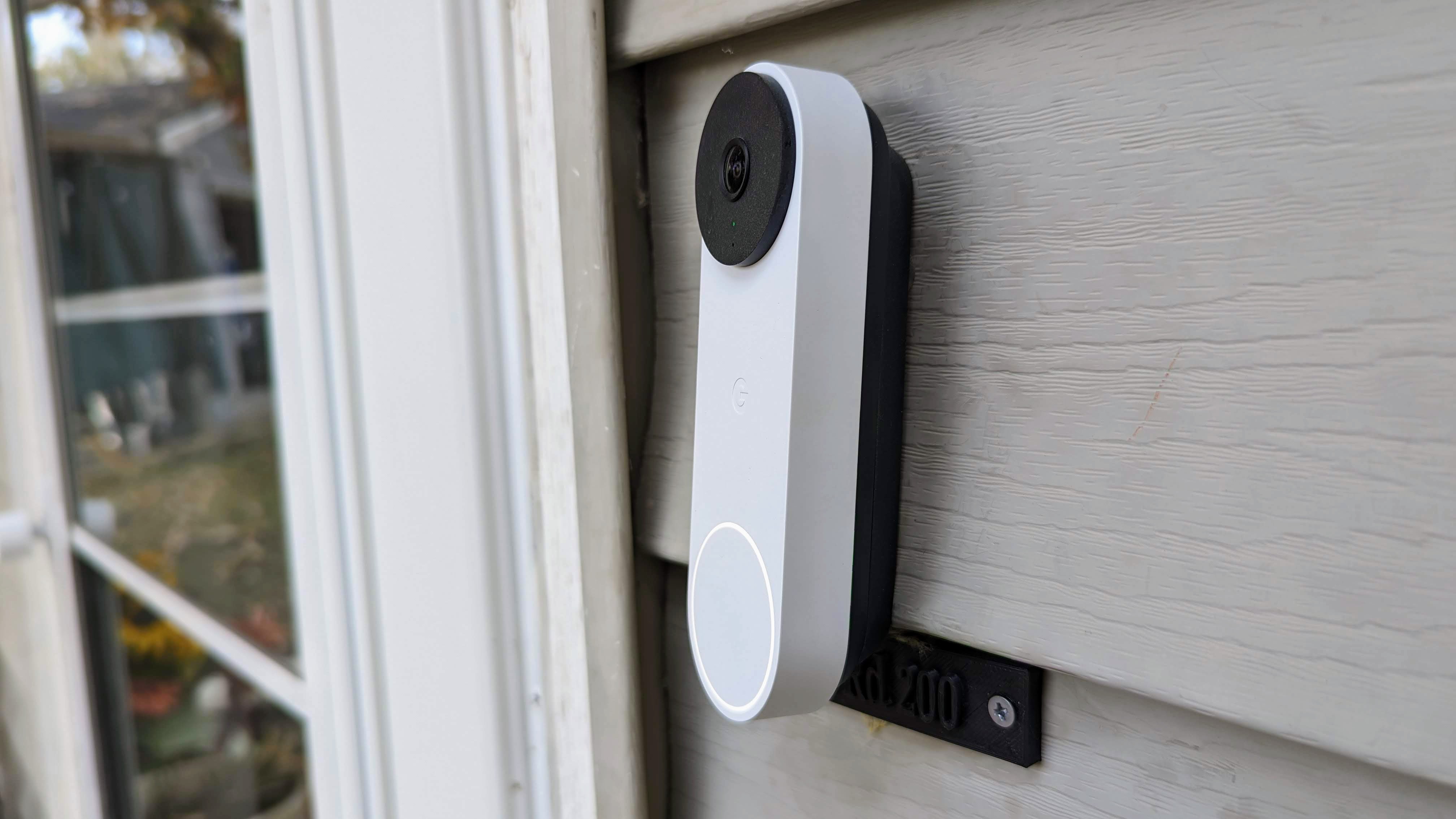
There are a lot of great video doorbells on the market these days, and the original Nest Doorbell (wired) from 2018 has been a favorite of many for a while. Now that we finally have a second generation, it brings some long-overdue changes — starting with the design.
For 2018 the style of the original Nest Doorbell (wired) was par for the course, looking much like other options out there. Now not only is it less appealing, but it looks out of place with Google's current design language. The Nest Doorbell (wired, 2nd gen), which I'm going to refer to as Nest Doorbell moving forward and will differentiate when needed, adopts the design from the battery-powered model that launched in August 2021.
The Nest Doorbell (wired, 2nd gen) gets a much-needed design overhaul and other improved features throughout.
The style is nice. The overall minimal look helps the device blend in, and with four color choices to choose from, you should be able to find one that works with your home's aesthetic. Aside from the circle around the camera housing and thin light ring around the button, the entire Nest Doorbell is a single color.
It has a relatively low profile so as not to protrude too much from your home. At the base of the doorbell is a large circular button that sits flush with the unit and has a satisfying press to it. The light ring around it is visible in most lighting aside from a very bright sun shining directly on it. The light illuminates when it detects something and when the button is pressed. There's one other LED indicator light showing the device is on, and it is a pinhole sitting just beneath the camera.
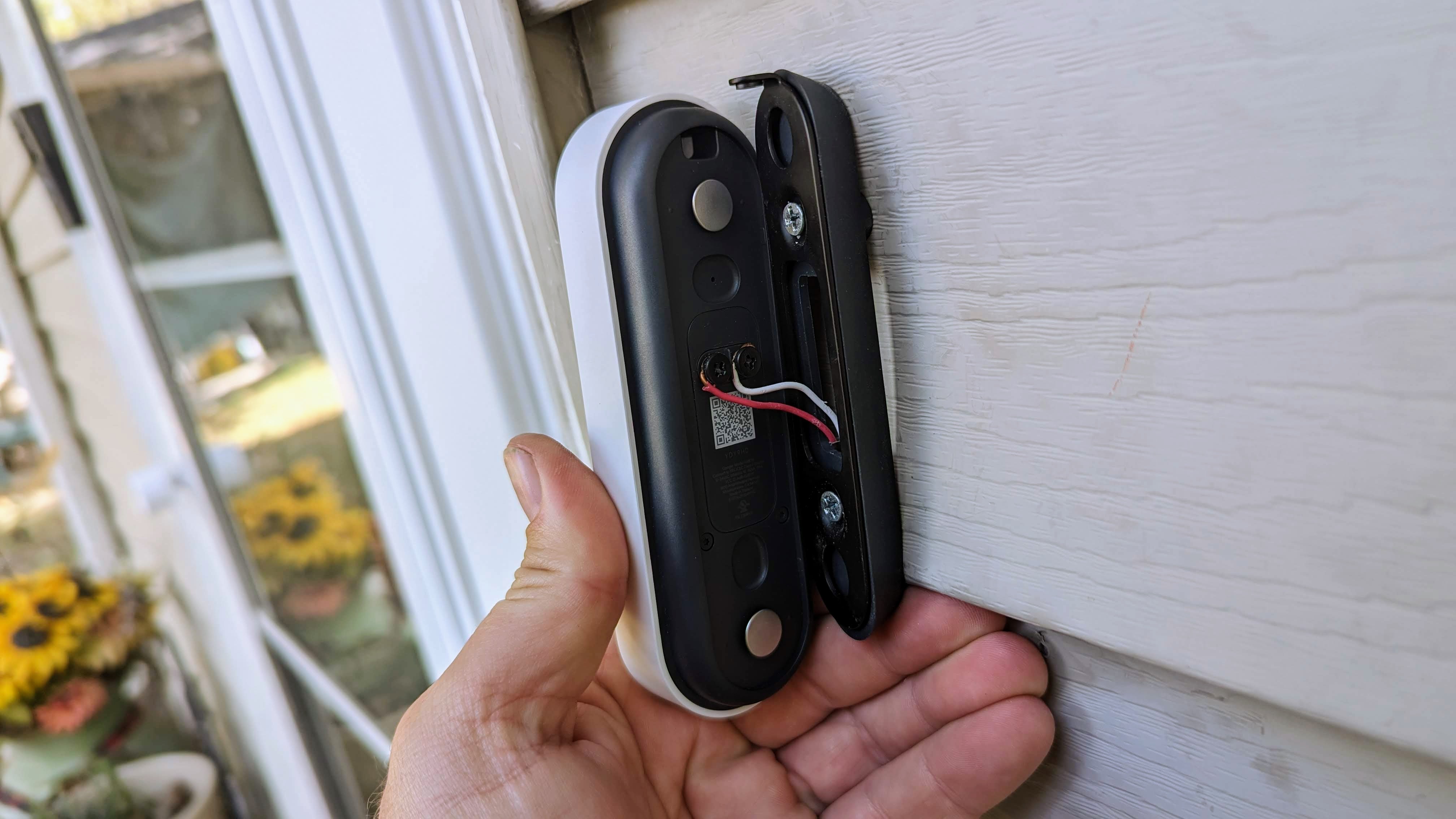
In the box, you get the Nest Doorbell, a mounting plate, a wedge to angle the camera, jumper wires for the doorbell chime, the chime puck, and mounting hardware. You'll also find a card in the box with a QR code to scan that links you directly to the installation video.
The installation process isn't overly complicated, and Google has done a good job of walking you through it step-by-step and offering a video as well. As mentioned above, you can scan the QR code to view the install video, but when you add the Nest Doorbell to the Google Home app, you are greeted with steps and the video.
Installing the Nest Doorbell to your home's wiring is a quick process, where you'll spend more time setting up the features in the app than using tools on your home.
Though not difficult, the process of installing the Nest Doorbell will take some patience, and you'll want to be sure and pay close attention to each step so that it goes smoothly. I want to be sure and remind anyone not familiar with or comfortable working with the electrical wiring in their home to call a professional to install the device. Also, while the app tells you this, if you do choose to try to install your video doorbell yourself, be sure to shut off the power to your existing doorbell before you start to remove it.
With the Nest Doorbell and included chime puck installed, the puck wires into your existing doorbell chime so your new video doorbell can work with it. Now, it was time to begin customizing the setting in the Google Home app, of which there are some really handy ones.
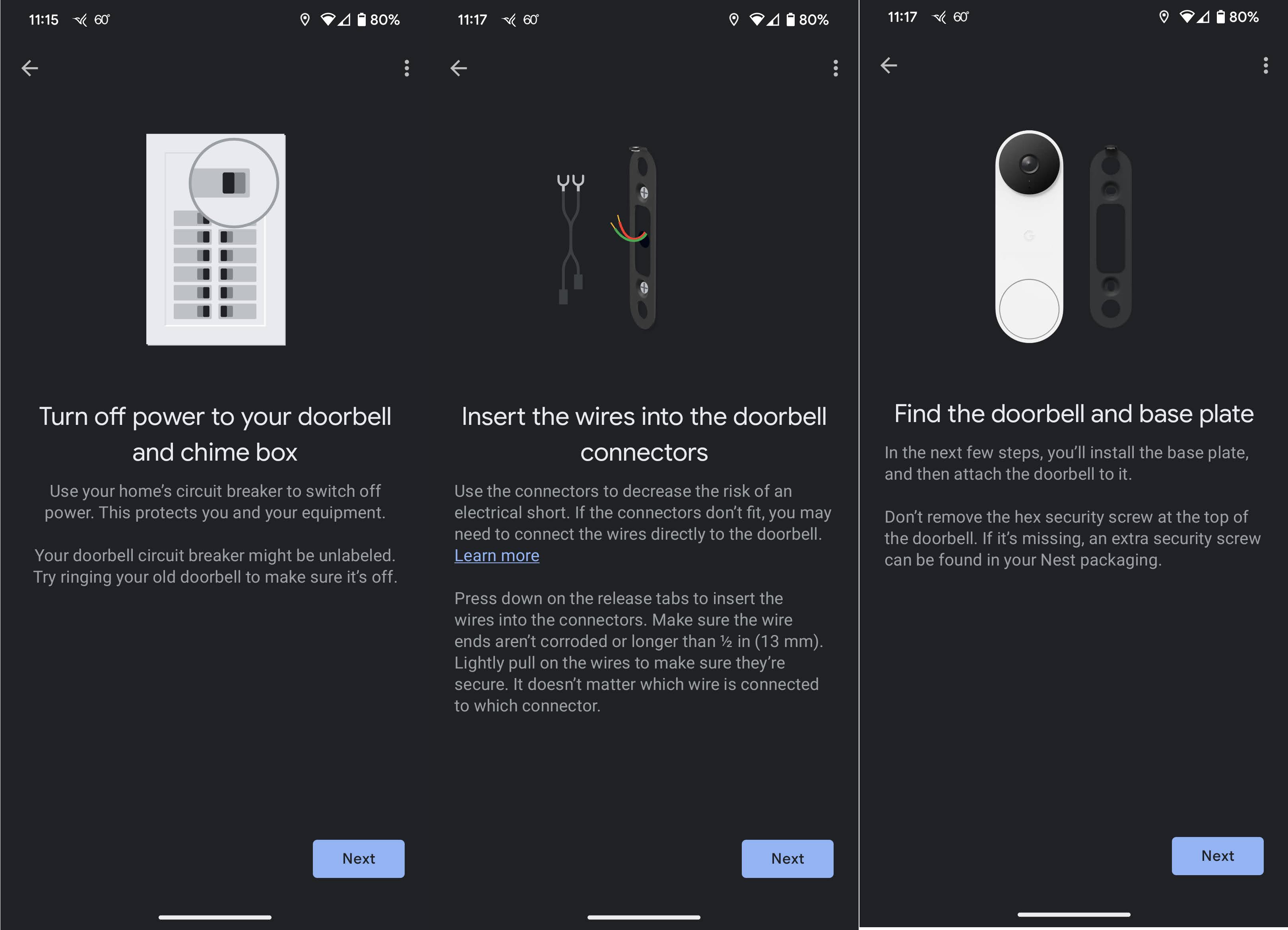
Questionably the primary function of the doorbell is to alert you when someone is at your door. You have a few options here where you can have any of your fantastic Google Assistant speakers alert you along with your doorbell chime. Then you can choose from a few doorbell themes that sound at the Nest Doorbell itself, letting the button presser know you've been notified.
Along with your speakers and chime letting you know someone is at the door, there are options for what and how you'd like notifications on your phone. There are two choices — Push notifications to let you know instantly of detection and Away-only notifications, so you only get alerted of motion when you aren't home.
Also, in the Notifications section, you get to set detection zones. This is when you get to draw a shape on the image of what the camera sees, so it knows only to send you alerts when motion is detected there. You also get to pick what you get notified about — people, vehicles, packages, animals, etc.
Google struck a good balance of offering options in the app to customize how your Nest Doorbell works for you and not overloading users with too much junk.
The Nest Doorbell can detect even more, but you'll have to pay for it. Everything l've listed previously is free. But, if you want your new video doorbell to detect familiar faces, sounds, and more, you'll need to sign up for Nest Aware for $6/mo or $60/yr. The Nest Aware Plus subscription is $12/mo or $120/yr.
Something else that might make you want to pay for a subscription is for expanded event history. For free, you get a three-hour history of events in the Google Home app. But if you want 30-days or longer, then you'll have to pony up some cash. The benefit of a hardwired video doorbell is that it can record 24/7, and if you want to be able to scrub your camera history to look for something you think happened but didn't get detected, you are going to have to pay for the Nest Aware Plus for that.
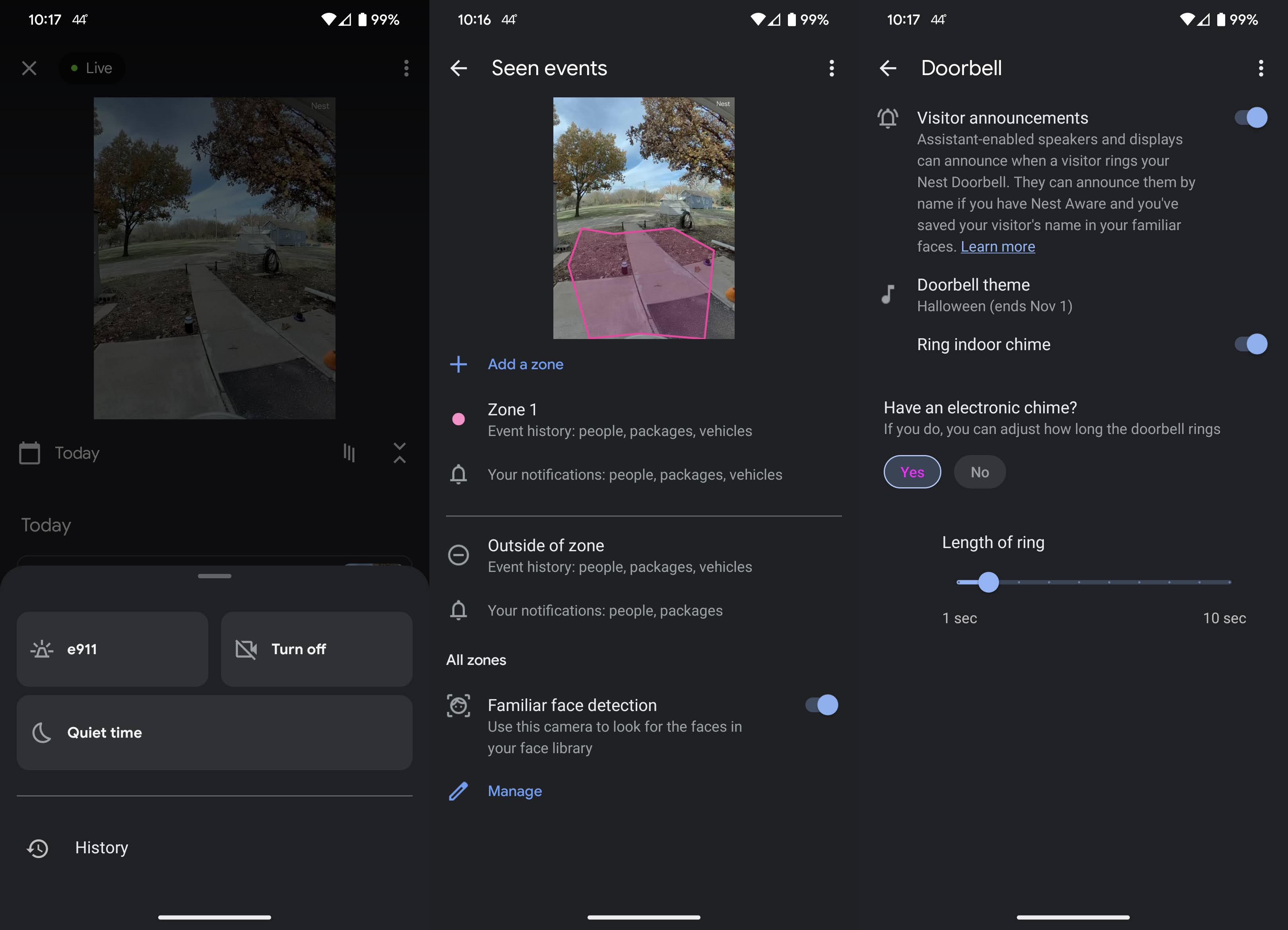
OK, after alerting you when the doorbell button is pressed, a video doorbell must have a good camera, and we know that Google knows cameras thanks to its history of Pixel smartphones like the new Pixel 7 and 7 Pro.
The Nest Doorbell has a 3:4 image ratio that offers a nice wide view at 145°. The image quality is plenty sharp, and Google's HDR prowess is definitely on display. The most situations, the subject in the camera's view is plenty visible, and details can be made out. But there are some fringe settings where it can struggle in brightly backlit subjects.
Using two-way communication through the Nest Doorbell works well. The noise cancelation does a good job of making the person on the other side of the doorbell clear so you can better hear what they're saying. Aside from speaking to the other person, Google does offer three pre-recorded phrases that you can trigger directly from the live view in the app.
| Header Cell - Column 0 | Nest Doorbell (wired, 2nd Gen) |
|---|---|
| Doorbell Dimensions | 1.7 x 1.1 x 5.2 in. (42 x 28 x 131 mm) |
| Colors | Snow, Ash, Linen, Ivy |
| Connectivity | 2.4GHz and 5GHz Wi-Fi (802.11b, 802.11g, 802.11n), Bluetooth Low Energy (BLE) |
| Wireless Security | WEP, WPA, WPA2, WPA3 encryption supported |
| Expandable storage | 🚫 |
| Two-way communication | ✔️ |
| Speaker | ✔️ |
| Camera resolution | HD, 960x1280 pixels 3:4 aspect ratio, up to 30 FPS, HDR, 1/3-inch 1.3-megapixel color sensor, 6x digital zoom |
| Viewing area | 145° diagonal |
| Night vision | 10 850 nm IR LED up to 10 ft |
| Smart features | Smart intelligence detection for: person, package, vehicle, animal, familiar faces (paid feature) |
| Weatherproof | IP54 |
| Power | Hardwired (16V AC ~ 24V AC, 10 VA Minimum, 50/60Hz) |
| Wireless chime | 🚫 |
Night vision also benefits from the built-in HDR. Assisting the software feature is 10 IR lights to help illuminate the camera's view. Subjects are visible and with many discernible details, even in very dark lighting conditions.
Google doesn't state how much storage is built into the Nest Doorbell, but a helpful feature of the device is that should it lose Wi-Fi connectivity, it will continue to record and store up to one hour of footage. Once back online, it will be available within the Google Home app. An hour may not be a lot, but anything is better than nothing.
Nest Doorbell (wired, 2nd gen) review: What's not good
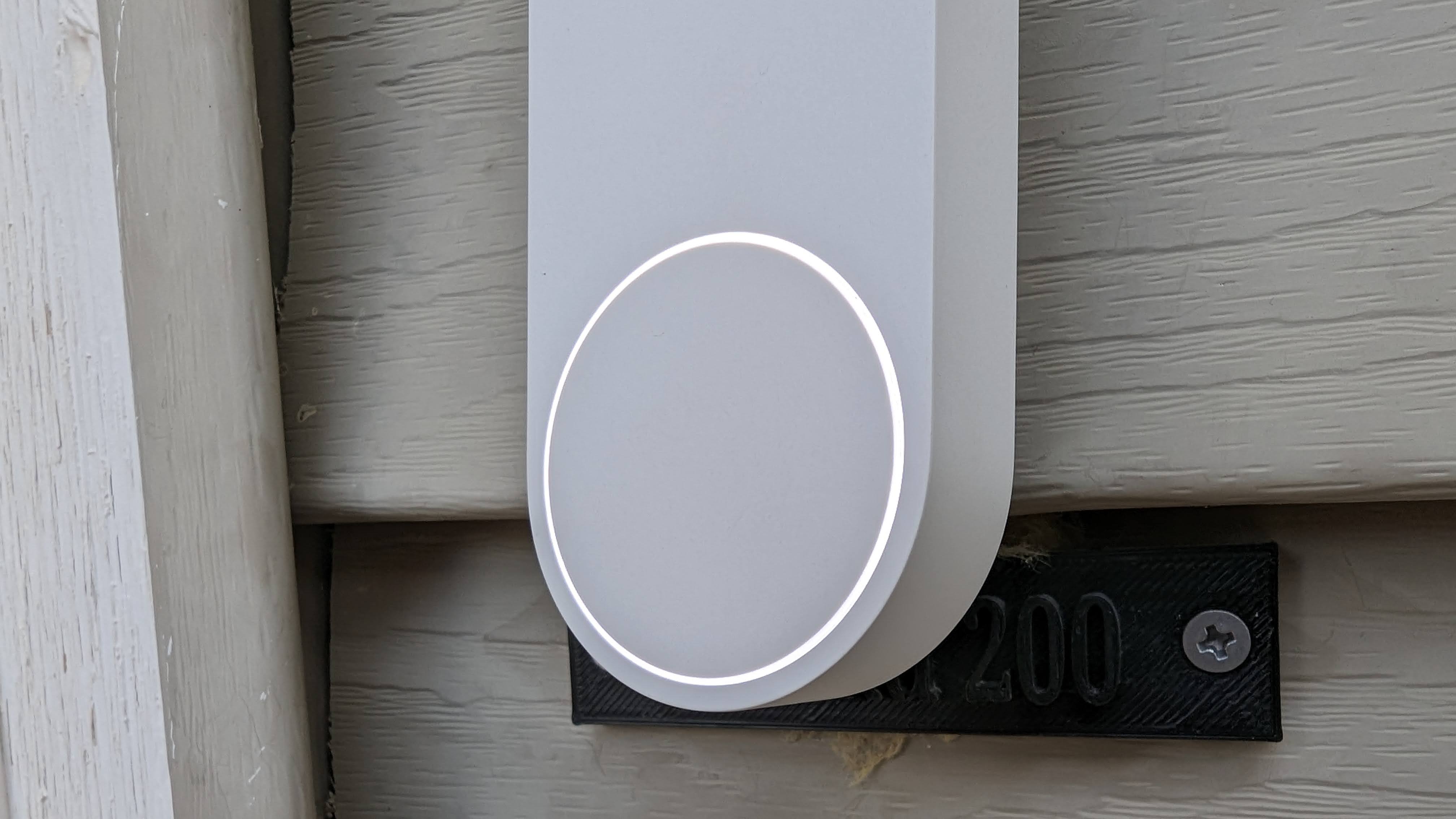
Overall the new Nest Doorbell (wired, 2nd gen) is a solid update to the original model. But a few areas are lacking, considering the price of this video doorbell.
Firstly, the lack of expandable storage and three-hour limitation of event history without a subscription. Because we can't add a microSD card to the Nest Doorbell, Google has users stuck, only allowing three hours of event recording. The device can record 24/7, though you'll pay at least $12/mo if you want all that footage. I'm not saying that that feature should be free, but I think three hours of continuous recording history and at least three days of event history should be.
This video doorbell is $180, and being forced to spend a bare minimum of $6/mo to have 30-days of event history seems unnecessary. Mostly because you either have to settle for the three-hour event history limit, which is better than nothing, but paltry next to the 30-day paid option. I just think there should be a middle ground and offer a bit more on the free tier.

Another area that is a bit lacking with the Nest Doorbell is the night vision. I know I said it was pretty good above, but not always. The IR lights are rated to provide visibility at only 10 feet. So, unless you have some area lighting or the subject is pretty close to your door, it's going to be pretty tough to make out what is happening.
My only other real complaint with the new Nest Doorbell (wired, 2nd gen) is the speaker. No, I'm not asking that it double as an outdoor speaker to provide ambient music at my door, although that could be fun. The current speaker seems to distort pretty easily at mid-high to high volumes. Oddly enough, the prerecorded responses provided by Google are less quiet and harder to hear than my voice when speaking through it. So to ensure you are clearly heard, the volume needs to be kept down, but then the person may not hear you at all because it's too quiet.
Nest Doorbell (wired, 2nd gen) review: Competition
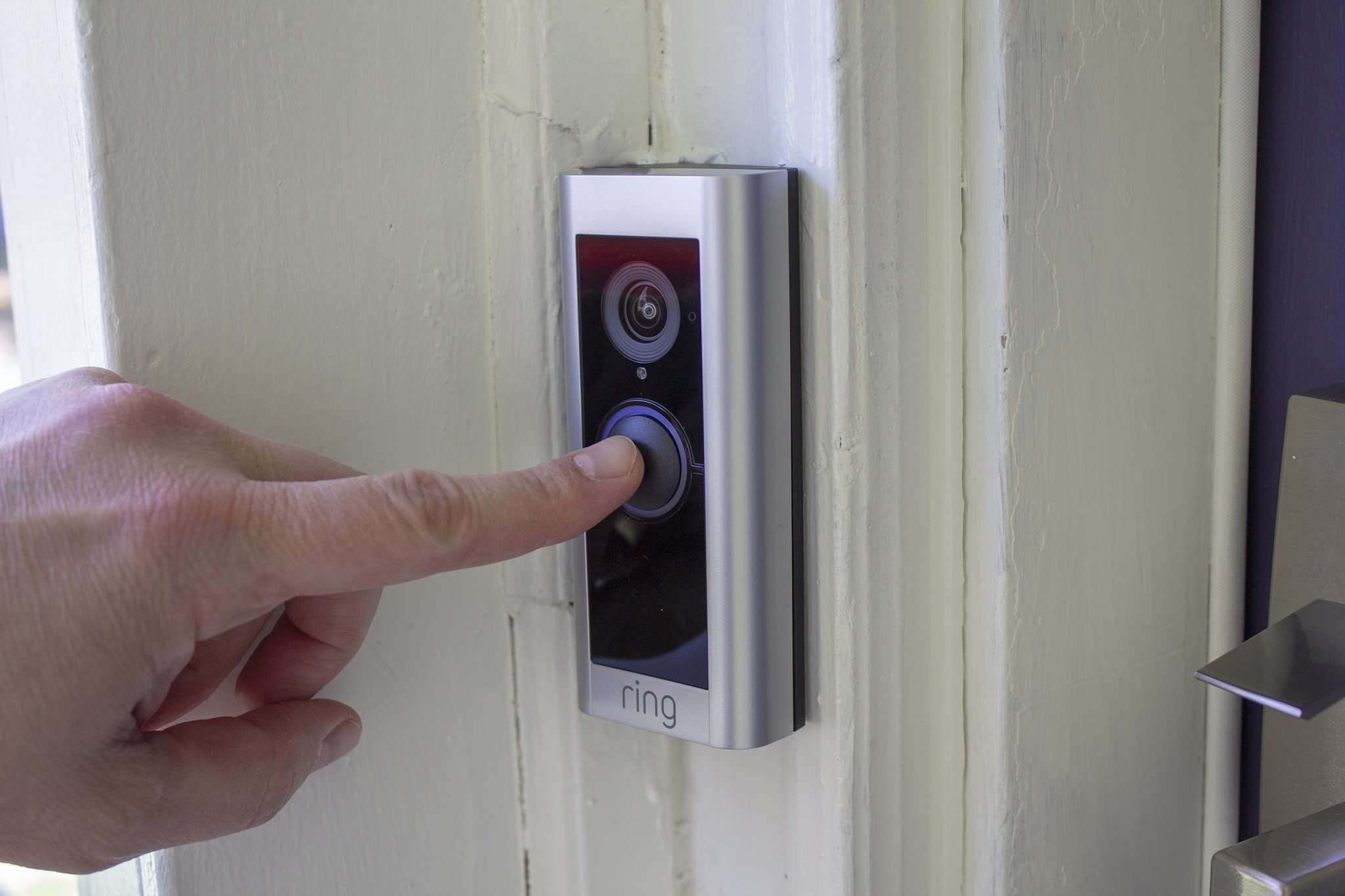
Sure there are a lot of video doorbells out there, including wired and wire-free, but options that offer similar features are less common. The first brand that comes to the mind of many is Ring, and for good reason. It was the brand that kicked off this category, and it has the widest range of options. The closest to the new Nest Doorbell (wired, 2nd gen) is the Ring Video Doorbell Pro 2,
This is a hardwired device that packs a lot of impressive features. It comes with a higher resolution camera than Google's offering, more advanced location-based detection, and radar motion detection that Ring calls 3D motion detection. While these are more advanced from a hardware perspective, Google's software is no slack. But, like Google's Nest Doorbell, the free basic features remove many of the advanced options leaving you to pay at least $3/mo for the Ring Protect subscription. Unlike Google, the design isn't nearly as nice, and you'll pay about $80 more for the Ring Video Doorbell Pro 2.
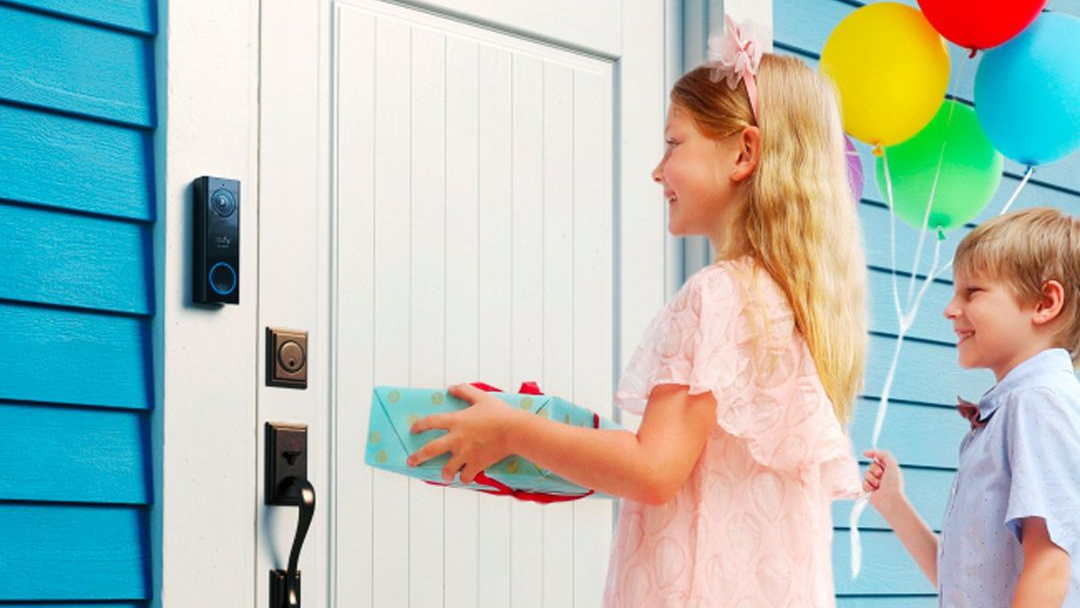
If you are looking for an option that brings helpful features, local storage, and no subscriptions needed, then the eufy Video Doorbell 2K (Wired) is one to consider. It has 4GB of built-in storage to record high-resolution 2K video directly to the device. It also offers many features similar to the Nest Doorbell and Ring, for that matter, like, person detection, activity zones, and more. But less reliable than what Google offers.
After wiring the doorbell to your home, you won't have any other wiring to do as eufy includes a wireless door chime that you simply plug into an outlet in your home. While it is compatible with Google Assistant, its features will be much more limited than the Nest Doorbell. You'll have a single color choice, black, to pick from, but it does cost a little less than Google's video doorbell at $150 on Amazon.
Nest Doorbell (wired, 2nd gen) review: Should you buy it?
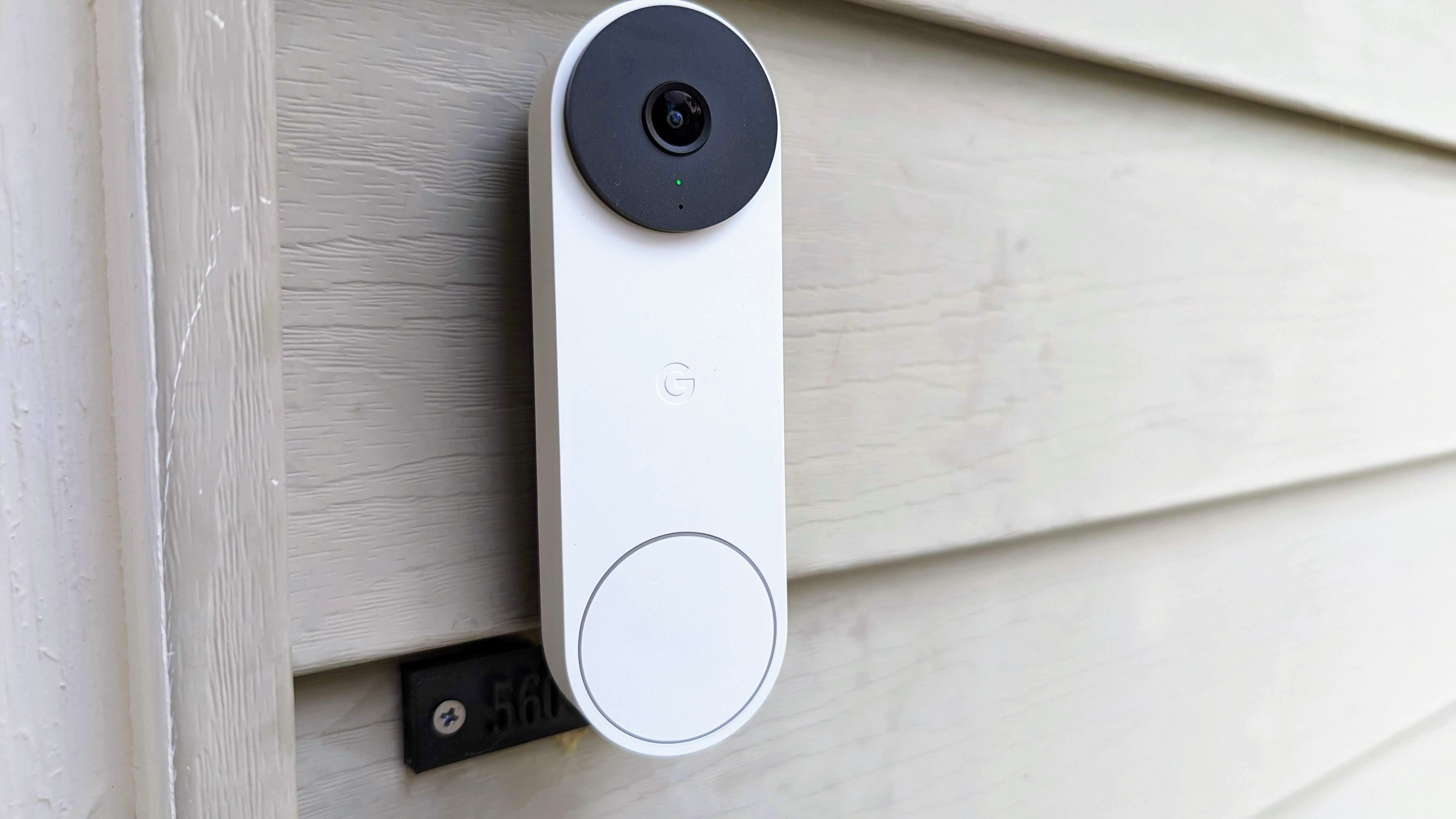
You should buy this if...
- You are part of the Google device ecosystem.
- You want a great looking video doorbell.
- You want a video doorbell that offers intelligent detection features.
You should not buy this if...
- You don't want to pay for a subscription.
- You live in a noisy area and plan to speak to visitors often through your doorbell.
- You don't want to hardwire the doorbell to your home.
As I said before, an updated Nest Doorbell (wired) was a long time coming. The refreshed design looks great, and the improved camera features are wonderful. The installation process is simple for those who are handy with a tool kit, but battery-powered devices have their benefits too. But the constant stream of power means the new Nest Doorbell (wired, 2nd gen) can record 24/7.
However, if you want to view all of that footage or more than three hours of event recordings, you'll have to pay for a subscription. Nest Aware does more than just unlock your recordings, it enhances the already great AI detection features of the doorbell. What can't be improved with your monthly fee is the less-than-stellar speaker performance.
Aside from locking more recording features behind a paywall than necessary, the new Nest Doorbell is great. It provides clear video, and the intelligent alerts the Google software provides integrate wonderfully into the Google device ecosystem. But even if you aren't deep in Google's hardware world, the Nest Doorbell (wired, 2nd gen) is a solid video doorbell.
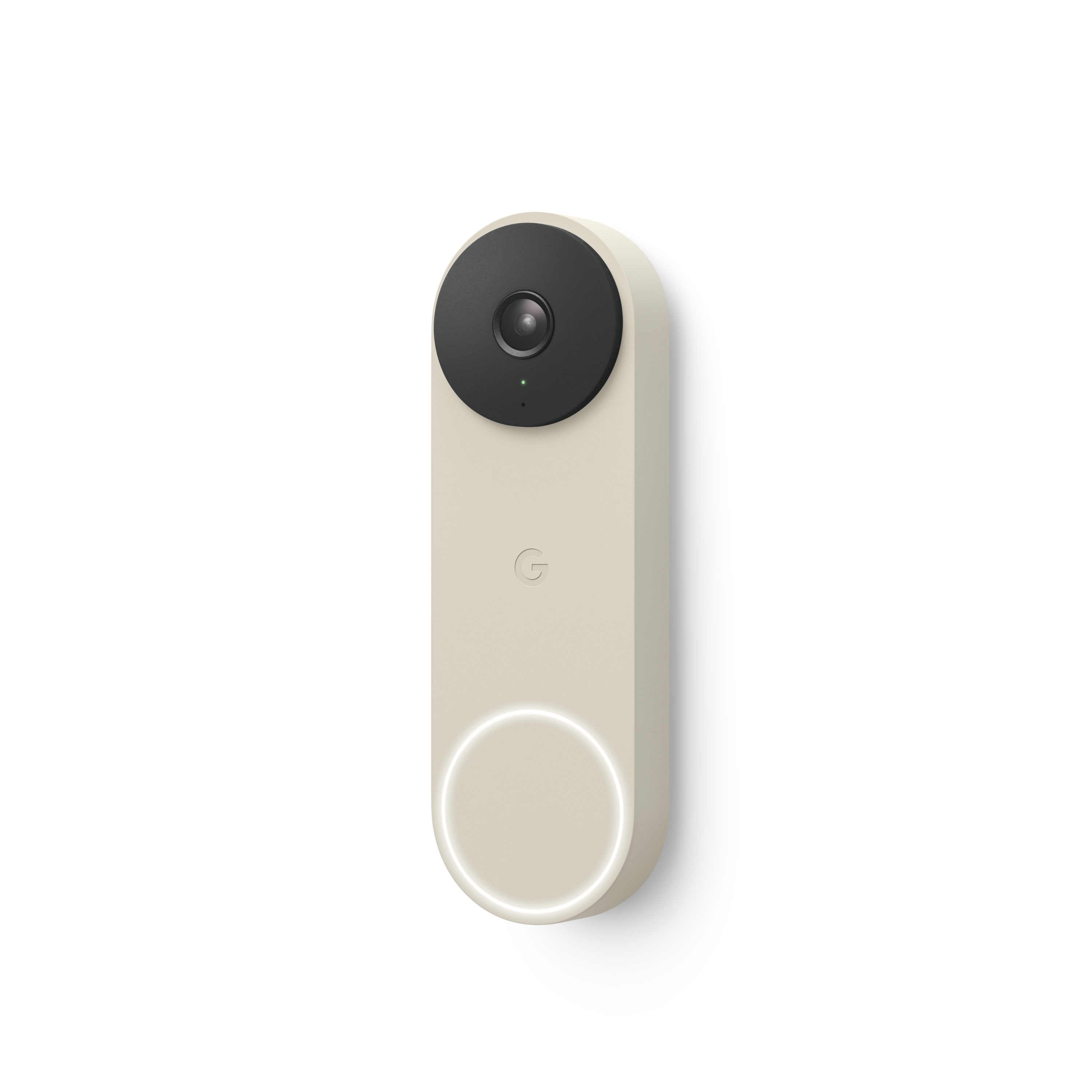
With a refreshed design and new improved software features, the Nest Doorbell (wired, 2nd gen) brings excellent security to your front door. Unfortunately, to access the full potential of the device you'll have to pay for a subscription.

